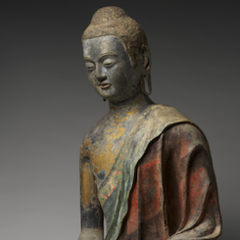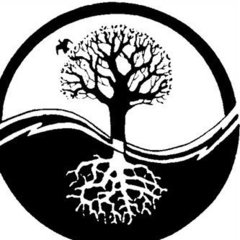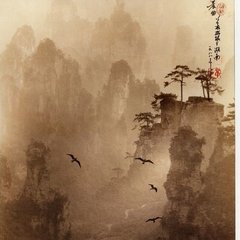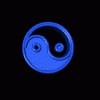Leaderboard
Popular Content
Showing most thanked content on 05/13/2019 in all areas
-
5 pointsI am sorry, but no on such rites. Most of such connections are subconscious and things like cord cutting are not really cutting a connection, but more like trying to build a mental wall around it. Such things usually become very unstable and breakdown. It is always hard, but the most powerful technique is simply forgiving yourself and the other person. Give it time and let it go.
-
5 pointsI use humor playfulness and absurdity to get a feel for the level of absolute certainty exhibited. Absolute certainty for me is a barometer for foolishness. They seem to have a direct proportional relationship... as one rises, so does the other. Then I remember that all of this is my own interpretations about them made by my mind, out of the partial information received from my senses, which reminds me that this renders almost all input utterly self projected assumptions based on subconscious behavioral conditioning models... then I throw the entire thing out and go about my day.
-
4 pointsLet it happen naturally. Try to accept it, rather than run from the connection. We all go thru crappy breakups and it would be wonderful to just forget about the people. But there’s important lessons to learn, and stuff to heal that comes with it. There’s no easy fix, unfortunately. Most energetic links are kept alive through our own thoughts/habits/inner stuff... so short of learning and healing through it, anything else would be a temporary fix.
-
3 points
-
3 pointsI try to approach this like silent thunder. When I encounter someone I find to be stuck, opinionated, fixed, unwilling to see an alternative perspective, I do my best to see how I may seem just like that to others, given any particular context or set of circumstances. Whatever view I hold, no matter how convinced I am of its veracity, is limited and relative. When I can see this directly, my irritation, frustration, or impatience towards the other person dissolves and some degree of understanding and compassion remain. Trying to see the other’s point of view, no matter how ridiculous or far-fetched, teaches me far more than simply dismissing them as fools and idiots. The US political landscape has helped me enormously in this regard. That said, it has also taught me to take the approach of not engaging, debating, or arguing, unless I am willing to pay the price. And to be clear, this is my intention, not something I have yet mastered.
-
3 pointsYeah. It was also somewhat confusing to me too. It’s generally quite unpopular with most students of the Dao. The context is important here. We should remember that the height of Daoism arose at the same time as Confucianism which is kind of the exact opposite... Confucian society was very ‘culturally refined’ and very stringently controlled - there were very many precepts for behaviour and many taboos. Human progress was considered to only be possible by refining action in accordance to strict external rules. I tend to think of the upper class Britishness of the 18th century... where even table legs were covered up because if left uncovered they were considered to be a bit too racy - reminding one of a lady’s bare leg 😧🙈 For Daoists the opposite was true. They were the anarchists of the day 😄 Their only precepts were Humour, Humility and a general attitude of not taking things too seriously. The important part is that there was a big difference between one who’s a cultivator on the path and an ordinary ‘householder’ living in society. For a spiritual cultivator, contrived rules are detrimental. For an ordinary person they are a necessity. And it’s also important to remember that developing uncontrived virtue was of critical importance in most of the Daoist lineages. Someone who’s fully virtuous and uncontrived is considered to have developed a higher attainment than mere immortality.... Uncontrived virtue means virtuous action that comes not from the ‘personality’ or the Acquired Mind but virtue that arises spontaneously from the Original Self (the Yuan Shen)... With uncontrived virtue one does things not for some personal aim (I want to be a good guy) but just coz they do it... “I’m going to pass on some wise lessons to these people” - contrived. Opens mouth, profound wisdom comes out - uncontrived There are five main virtues and they all come about through the harmonisation of Qi in the body as a foundation, through to the full transformation of the Acquired Mind and one’s emotional nature. They are: Contentment, Patience, Bravery, Compassion and Wisdom.
-
3 pointsSimilarly, I’ve leaned away from the word emptiness in favor of words like openness, resting, and spaciousness, depending on context and participants in any given discussion. Emptiness invites the conceptual mind to engage, which often results in the error of nihilism, Words like openness, resting, or spaciousness connote a more practical and experiential approach to my ear that may lead us to direct realization. Genuine realization of emptiness cannot be misinterpreted in a nihilistic way.
-
3 points"I'd rather take shit from a smart ass, than clean it up after a dumb one..." Me at work.
-
3 pointsThe Buddha was part of the shramana tradition in the Eastern Gangetic region of North India (along with Jains and Ajivekas etc). It seems he achieved awakening after trying the various extant schools of the time including Samkhya and so on - but he rejected these approaches and achieved his enlightenment alone under the bodhi tree on the basis of his own insight into the nature of reality. At first he thought his realisation impossible to communicate in words but on being exhorted to teach began with the Four Noble Truths - which I guess could be considered to be the beginning of Buddhism - but of course they wouldn't have called it Buddhism but Dharma a term held in common with the Sanskrit based cultures of Northern India. No he didn't write anything. He lived in pre-literate times in India. His teachings were first written down in the 1st Century BC as the Pali Canon (as well as other collections) based on oral transmission to that date. So this is 200 - 300 years after his paranirvana. They are considered by many to be authentic and extensive - but I would say they are inevitably selective towards the prevailing form of Buddhism at that time which was scholastic monasticism. It depends on your point of view. There is a significant difference between the Pali Canon and Mahayana sutras - not just in content and emphasis but also in the way they were supposed to be used. Sravaka sutras are meant for listeners - while mahayana sutras are more participatory and were transmitted from the 'holder' to the audience. They are not necessarily deeper but perhaps more aimed at a different mind-set - one motivated by faith and energy rather than rational analysis. The earliest mahayana sutras were written down more or less at the same time as the other sutras - and originally there were both mahayana and hinayana practioners side by side in the same monasteries - so the historical development of one from the other is a myth. I think the Buddha was making the point that as a teacher of non-dualism that quite a lot of what he said is provisional - or skillfull means - but has been taken as absolute truth by some who followed him. He taught in 84,000 ways (a number which can be taken to mean infinite) because he addressed the needs of his audiences - as these varied - also the Truth = Dharma is not directly expressible in words - so spontaneously in the moment what can 'work' in one case is not always appropriate.
-
2 pointsDo you have a spiritual practice? I think it’s important to approach this with a method you find supportive, something that inspires confidence in you. My approach is to not attempt to break the connection but to feel it, embrace it, be with it fully. I then bring this energetic identity, the one who is attached, the one who feels the connection, into a supportive meditative space (we refer to it as inner refuge). The openness, clarity, and warmth that are naturally there in the refuge allow the identity to lose its hold and, slowly over time, dissolve and ultimately liberate. This is an approach that requires some fundamental familiarity with a supportive meditative space that can fully envelope and withstand whatever challenges I bring with me. Not something anyone can just sit down and do from scratch. Feel free to PM of you want more detail.
-
2 pointsSure " For instance, there is no social commentary, no political or military advice," This combo minqi is a specific technical term meaning 'the energy of the nation', it is something that should be gauged, controlled and used for politics=governing the nation. The translators did not recognized it as a political lingo and confused it with some kind of personal qi. But the latter is only means to an end of controlling the former. https://ctext.org/pre-qin-and-han/ens?searchu=民氣 &page=2 "nor any explanation of how the universe was created or how it works" Umm, the very first verse explains what are stars made of and what makes all things tick.
-
2 points
-
2 pointsI've heard this idea before, and I can see some sense in it, and it does get to the moral heart of your daoism. But for me, this actually puts me off this style of practice. So, do these qualities slowly develop with the practice, or do you only act in a 'virtuous' way once you've attained X, which may be right at the end of the path, or never if you never quite get there. I'm comparing this attitude with bring up a child - do you teach them how to treat others with respect? When you yourself have an 'acquired mind'? Hmmm, I've got some other thoughts on this that I can't quite put into words yet . . . EDIT There are some strong differences between Chinese and Western culture, maybe this is slightly touching on why ... EDIT 2 should there be moral guidance in wider society who don't have access to this teaching, of course. It's strange then starting a spiritual practice where you then let some of that go, but just which bits of your earlier moral education do you let go?
-
2 pointsNot about revealing or doing. Just says: 5. When flowing amid the heavens and the earth 6. We call it ghostly and numinous. 7. When stored within the chests of human beings, 8. We call them sages. It is about Qi. If you look at large polarities, like between Heaven and Earth, those causing weather, etc - hard to see full spectrum of event. Inside people, same phenomena is going on - movement and Qi - and this we can understand. And by understanding in ourselves what we are aware of, we are understanding the larger outside that we are maybe not. This isn't cultivated. Just describe. Not talking about cultivating at this point. It is simply pointed out - "realized", etc. Nothing in text shown so far is about cultivating or you doing anything. Text isn't a cultivation techniques manual to begin with. It is something else. -VonKrankenhaus
-
2 pointsBetter a diamond with a flaw than a pebble without one.- very old Chinese proverb
-
2 pointsI've attended some of WLP's retreats. Daoist walking, tree qigong, and sleeping practice are usually taught at the retreat very close to how they are described in the book. It does not mean that a verbal description is complete because there is always a lot more to them then you can put in any description. When you are on the retreat, you absorb the teaching not only verbally but with all you body and spirit and everything integrates inside you body. It is like you would play a violin on its own and then you would play it as a part of the symphony orchestra - as you can imagine the difference is huge even though the violin is absolutely the same and the tune is absolutely the same.
-
1 pointPreviously I said I would put the chinese in a spoiler but seems too difficult when it is attached to linnell's text. I began this by following Roth's sections (26) but find it feeling short so changed this now to follow Eno's sections (18). The section names are from Eno. Some additions to the below texts are inserted to clarify a word use. Example: Essence [Jing]. This is done for Jing, Qi, and De if the author did not use the pinyin. See ctext.org for alternate chinese text to Linnell (https://ctext.org/guanzi/nei-ye) Notes: 凡 - Always. See Ctext as this is used throughout the text but many don't translate it 精 - Jing. Later explained as above Qi 物 - Wu. things. matter. If one knows Wan Wu, is the ten thousand things. 為 - Wei. Do. Some may know this in compound with Wu Wei. 下 - Xia. Below reference to earth 生 - Sheng. Born, beget, product. Look at LZ 42 (Dao Produced the One--Chan). 上 - Xia. Above, reference to heaven 天 地 之 間 - Gate/passage of heaven and earth 鬼 神 - ghosts & spirits 中 - Center, inner, central, inside, innermost 聖 人 -Sages 氣 - Qi 天 - Heaven / Sky 德 - De 安 - calm, peace 意 - intent 智 - wisdom Section 1: The Essential Qi Eno: It is the essence [Jing] of things that gives life to them. Below, it gives birth to the five grains; above, it is the ranks of stars. Flowing between heaven and earth: we call these ghosts and spirits. Stored within the breast: we call these sages. This qi is So bright! As though climbing to heaven. So dark! As though entering the abyss. So broad! As though permeating the sea. So compact! As though residing within oneself. This qi Cannot be detained through physical force, but may be brought to rest by force of virtue [De]. It may not be summoned by means of sound, but may be received through one’s thoughts. To guard it alertly without fail, this is called perfect virtue [De]. When virtue [De] is perfected wisdom emerges and all the things of the world are grasped. Linnell: 凡 物 之 精 Always : the essence [Jing] of creatures – 此 則 為 生 This then makes them live. 下 生 五 穀 Below, it gives birth to the five grains; 上 為 列 星 Above, it acts to arrange the stars. 流 於 天 地 之 間 When it flows in the space between heaven and earth 謂 之 鬼 神 We call them ghosts and spirits. 藏 於 胸 中 When it collects in the center of the breast of people, 謂 之 聖 人 We call them sages. 是 故 民 氣 Thus the Qi of the citizens :杲 乎 Is it bright?如 登 於 天 As though ascending to heaven.杳 乎 Is it dark and quiet?如 入 於 淵 As though entering into an abyss.綽 乎 Is it wide and spacious?如 在 於 海 As though residing in the ocean.卒 乎 Is it close?如 在 於 己 As though residing in oneself. 是 故 此 氣 也 Thus this Qi –不 可 止 以 力 Can not be brought to rest by using force,而 可 安 以 德 But can be calmed by using De.不 可 呼 以 聲 Can not be summoned by using your voice,而 可 迎 以 意 But can be made welcome by using your intent.敬 守 勿 失 When you can respectfully maintain it, and never lose it,是 謂 成 德 This is called developed De.德 成 而 智 出 When De develops, and wisdom* arises,萬 物 果 得 The bounty of the ten thousand creatures is attained. Roth: 1. The vital essence [Jing] of all things: 2. It is this that brings them to life. 3. It generates the five grains below 4. And becomes the constellated stars above. 5. When flowing amid the heavens and the earth 6. We call it ghostly and numinous. 7. When stored within the chests of human beings, 8. We call them sages. -- Section 2 -- 1. Therefore this vital energy [Qi] is:2. Bright! – as if ascending from the heavens;3. Dark! – as if entering an abyss;4. Vast! – as if dwelling in an ocean;5. Lofty! – as if dwelling on a mountain peak.6. Therefore this vital energy [Qi]7. Cannot be halted by force,8. Yet can be secured by inner power [Te].9. Cannot be summoned by speech,10. Yet can be welcomed by awareness.11. Reverently hold onto it and do not lose it:12. This is called "developing inner power." [De]13. When inner power [De] develops and wisdom emerges,14. The myriad things will, to the last one, be grasped. Shazi Daoren: The Essence [Jing] of all things, thru transformation creates life. Below, it brings to life the five grains, above, it aligns the stars. When flowing among the heaven and earth, we call this the 'spiritual being'. When stored up in the center of the bosom, we call this the Sage. -- Section 2 -- Therefore, regarding 'Energy' [Qi], it is:Bright! As if ascending the sky;Dark! As if entering into the abyss;Disperse! As if existing in the ocean;Present! As if existing in the self. Therefore this Energy [Qi]:cannot be stopped by force,yet can be pacified by Virtue [De],cannot be spoken by voice,yet can be embraced by the mind.Reverently nurture it and do not let it go:this is called 'developing Virtue' [De].When Virtue [De] develops and wisdom emerges,the myriad things will all be attained. Yueya: The vital essence [Jing] of all things, It is this that brings them to life. It generates the five grains below; It becomes the arrayed stars above. When flowing amid the heavens and earth, We call it ghostly and numinous. When stored within the chests of humans, We call such beings sages. -- Section 2 -- Thus we may describe this qi —Bright! — as if ascending to the heavens;Dark! — as if entering an abyss;Vast! — as if dwelling in an ocean;Lofty! — as if residing on a mountain peak. Therefore this qi—Cannot be controlled by force,Yet can be stabilized through inner power (de).Cannot be summoned by speech,Yet can be welcomed through awareness.Reverently guard it and do not lose it:This is called “developing inner power.” [De]When inner power [De] develops and wisdom emerges,The bounty of ten thousand things will be realized. Reid: 1 凡物之精, It is invariably the essence of things 2 此則為生。 That gives them life 3 下生五穀, Below, it gives birth to the five grains; 4 上為列星。 Above, it aligns the stars. 5 流於天地之間, Circulating between Heaven and Earth, 6 謂之鬼神。 We call it ghosts and spirits; 7 藏於胸中, Collected within the bosom, 8 謂之聖人。 We call them sages 9 是故民氣, As a result (of essence), the energy-breath of common people (becomes) {1} 10 杲乎如登於天。 Bright! As though rising up to the Heavens; 11 杳乎如入於淵。 Dark! As though entering the depths; 12 淖乎如在於海, Spacious! As though within an ocean; 13 卒乎如在於己。 Enclosed! As though entirely self-contained. 14 是故此氣也, As a result, this energy-breath 15 不可止以力, Cannot be stopped with effort, 16 而可安以德。 Yet can be made peaceful through virtue; 17 不可呼以聲, Cannot be called over with a shout, 18 而可迎以音。 Yet can be welcomed with a harmonious tone (intention).{2} 19 敬守勿失, Honour it and guard it within. Do not neglect it. 20 是謂成德。 This is called ripening virtue.{3} 21 德成而智出, When virtue has ripened, wisdom comes forth, 22 萬物果得。 And the myriad things attain fruition. {1} The word min, 民 “the people,” is usually suppressed in translations of this line as it appears to read “the qi of the common people is: bright!..” By reading 是故 with its literal meaning of “as a result” rather than simply “therefore,” the following lines appear to describe a transformation of the people’s qi. The conclusion of this passage, “When virtue has ripened, wisdom comes forth, and the myriad things attain fruition,” appears to support such a reading. Further statements such as “when the people attain it, they become fruitful” also suggest an interest in a transformation of “the common people.” {2} “音 Tone” is generally replaced here with yi, “意 intention.” I have retained the received wording, where “tone” contrasts with “noise; shout.” The Nei Ye later states that “to dispel sadness, nothing compares to music,” and the Xin Shu Xia states that “to moderate anger, nothing compares to music.” In “The Ten Faults” chapter of the Hanfei Zi (another important Legalist text), great weight is put on the importance of a ruler listening only to consonant music, stating that only rulers with a highly developed virtue can listen to melancholic and dissonant modes without falling into misfortune. “Healing sound qigong” uses vocal sounds to heal the internal organs, though its date of origin is uncertain. There is, therefore, reason to believe that 音 yin was intentional, if not just to contrast tranquility (harmonious tone ) with anger (shouting). See also, Nei Ye line 167. {3} The term “virtue” in lines 16, 20, and 21, may carry overtones of its synonym “attainment,” as explained in Xin Shu Shang line 116.
-
1 point
-
1 pointThe two main ideas here are qi and te ... or is it Qi and Te. In the west we capitalize words that have specific and distinct meaning. Certainly, there are analyses where there is distinction made between athe generic use of a term and the specific. Which is it here? Can those who read the original source material give guidance? We have certainly heard of qi as being dispersed, scattered. So, it makes sense that it may be thought of as being collected or gathered. If so "it" or is it by its concentration that which enables awareness of "it"? Is it substance or acting? Te is a very interesting subject. Here it is likened to virtue, which in my mind is just as vague. I envision virtue to be a collection of enabling qualities, one of which is intent. Sincerity also comes to mind. These are the things thst jump out for me in this passage.
-
1 point
-
1 pointWhat do you get out of being connected to this person ? It's not really about them, it is about you and your needs. For instance if you wish to please people, perhaps because you have a habit of doing this because of a fear of aloneness, or because you do not have the skill of loving yourself, or due to pain that is waiting to be resolved, then you will be maintaining this connection. Try the cord cutting ceremony, if it doesn't work then something deeper is there.
-
1 pointI read the location somewhat metaphoricly, as in center of being. But also more that just location ... condition, process ... which is what we will go on to see in the rest of the text. What stood out for me was the undefined reference to "it". Leaves a lot open to interpretation. I have a little bit of trouble with the idea "it" is stored or collected in the chest. I tend be believe it is always present ... But that interpretation does not seem to be support in the first passage. Then there is the notion, as pointed out, that "it" is everywhere, throughout. Which leads me to ask what then is the function of the center. Is it an abode into which "it" is collected or stored, as the text says. Or, is the center the locus of process/condition where one experiences awareness of "it".
-
1 pointBeen raining for almost a week. This morning was first sunny morning in a while. Decided to get out. When I got in the cars and turned on the radio, I was greeted with this .... Now that's the way to start a day!
-
1 pointHi Yueya, This is how I feel when I read your booklet ~ clearly. - Anand
-
1 pointIn my experience it takes about half the time that the relationship was maintained, for the connection to dissolve naturally... for the waters to clear so to speak. Although this varies depending on the depth of the connection and the process and approach of the one walking away, versus the one being walked away from (sometimes this is maintained indefinitely)... each dynamic can have drastically different results for each involved. Residual echoes of the other person's influence will persist long after this... memory triggers arise, though with time, the impact of the recall does seem 'lose its teeth' and the memories no longer carry the sting and substantiality and ability to influence the current moment they when they arise later in the process. I find it good to reassess when memory triggers arise, where I was, where I am and reassert my intentions and then when my bearings are set again clearly, let go again.
-
1 pointAn expert on comparative religion told me that the those hats represent open fish's mouths, because the 'church' ruled during the age of Pisces, a water sign. Jesus was said to be a fisher of men, holy water, and much more. Aprox 2000 years. The age before that was the age of Aries, of Judaism, the Ram. Aries is a fire sign, and so it is that the Western religion of the time used fire on their altars, were goat herders, god appeared as a burning bush, etc. Aprox 2000 years. The age before that was the Age of Taurus, the bull. Taurus is an Earth sign, and so it is that the Egyptians, who were cattle ranchers and built great earth works like the pyramids and much more, were 'the power' of that time. Aprox 2000 years. Now we are in to the age of Aquarius, which is an air sign, and so we have vehicles and information flying through the air and onwards into space. Air signs also stand for knowledge and so it is that this is an age of information and mind, information about everything is growing exponentially ... for some, information does not trump stupidity for those who are blind. The symbol for Aquarius is a person pouring water on the Earth, which represents nurturing the Earth, and this is indeed the time when there is a great groundswell of sentiment about preserving nature and the environment. The age of Aquarius will last another 2000 years, and so it seems that it will take that long for the planet to heal, and it can only heal if there is a drastic reduction in human population. The big question is how bad will it get before it gets better. ... and the alien involvement.
-
1 pointI'll share some personal stories about aliens later, but it seems that a lot of 'all this' points back to the Egyptians, who appear to have some advanced technology and contact with aliens. I'm sure there are countless people who would like to learn more about all facets of Egyptian life, their technology, their spiritual path, their knowledge of aliens and astronomy. It turns out much of this knowledge was stored in the Great Library in Alexandria, Egypt. The early crusaders burned the Great Library and so all that knowledge is gone. In my mind that is the beginning of what I call the Great Stupidification, which is accelerating even now as we speak.
-
1 point
-
1 point6.3 Overview of the Lord Buddha’s Teachings On one occasion, our Lord Buddha was staying at Sisapavana in the city of Kosambi. He picked up some leaves of the Pterocarpus tree and said to the venerable Monks, “Compare the number of leaves that I have in my hand to the number of leaves remaining on the tree, which do you reckon is greater?” The venerable monks answered, “The number of leaves remaining on the tree is greater, Most Exalted One.” The Lord Buddha said, “Monks, the knowledge that I possess can be compared to the number of leaves remaining on the tree and yet I did not teach it to you. Do you know why? The reason is such knowledge is not useful… It is not conducive to the attainment of Enlightenment… It cannot lead to Nibbana… Therefore, I did not teach it to you. What I do teach you is about Dukkha, Dukkhasamudaya, Dukkhanirodha, and Dukkhanirodhagaminipatipada. I have taught you these things because they are useful to your attainment of Enlightenment and Nibbana. Therefore, all of you should endeavor to know these things For yourselves.” From this saying of the Lord Buddha we learn that the Dhamma is about Dukkha, Dukkhasamudaya, Dukkhanirodha, Dukkhanirodhagaminipatipada. In other words, the Dhamma is about the Four Noble Truths. Before the Lord Buddha’s attainment of Complete Nibbana, He talked about the Buddha, the Dhamma, the Sangha, the Magga, and other practices. The Dhamma here includes the Four Noble Truths while the Magga and other practices are Dukkhanirodhagaminipatipada which is part of the Four Noble Truths. The Magga and other practices are called the Noble Eightfold Path. The term “Ariyasac” comes from the word “Ariya” and the word “Sac”. Ariya means sublime whereas Sac means the truth. Therefore, “Ariyasac” means the sublime Truth. Details about “Ariyasac” are as follows: 6.3.1 Details about “Ariyasacca” 6.3.1 Details about “Ariyasacca” has four parts and these include Dukkha or Suffering, Dukkhasamudaya or the Cause of Suffering, Dukkhanirodha or the Cessation of Suffering, and Dukkhanirodhagaminipatipada or the Path leading to the Cessation of Suffering. 1. Dukkhaariyasac means the sublime truth about suffering. Dukkha means a condition which is difficult to sustain. Such is the condition of all things and all living beings because everything and every being undergo birth and death in accordance with its own make-up and this condition is not subject to control. There are twelve categories of Dukkha. These include Jatidukkha, Jaradukkha, Byadhidukkha, Maranadukkha, Sokadukkha, Paridevadukkha, Domanassadukkha, Upayasadukkha, Dukkhadukkha, Appiyehisampayogadukkha, and Piyehivippayogadukkha, and Yampicchamnalabhatitampidukkha. These twelve categories of Dukkha can be summarized as “Upadanakhandha-5” Which means the suffering that comes from attachment to the Five Aggregates. 1. Jatidukkha means the suffering that comes from birth. 2. Jaradukkha means the suffering that comes from aging. 3. Byadhidukkha means the suffering that comes from sickness. 4. Maranadukkha means the suffering that comes from death. 5. Sokadukkha means the suffering that comes from grief. 6. Paridevadukkha means the suffering that comes from longing for someone or something. 7. Dukkhadukkha means the suffering that comes from physical discomfort. 8. Domanassadukkha means the suffering that comes from worries. 9. Upayasadukkha means the suffering that comes from vengefulness. 10. Appiyehisampayogadukkha means the suffering that comes from encountering what one hates. 11. Piyehivippayogadukkha means the suffering that comes from being separated from what one loves. 12. Yampicchamnalabhatitampidukkha means the suffering that comes from disappointment. These twelve categories of Dukkha can be summarized as “Upadanakhandha-5” which means the suffering that comes from attachment to the Five Aggregates or Khandha-5. Such suffering comes from the fact that human beings and other living beings are made up of the Five Aggregates which include corporeality or Rupa, feeling or Vedana, perception or Sanna, mental formations or Sankhara, and consciousness or Vinnana. These Five Aggregates are contaminated with defilements. Defilements are the cause of Upadana or attachment. It is for the reason that we believe Khandha-5 belongs to us that we Experience these twelve categories of Dukkha. Now, if we know to consider the Five Aggregates or Khandha-5 as our temporary home, then when something happens to them we will not experience Dukkha and even if we do, the experience will not be as intense. For example, when we look at our self in the mirror and see the obvious signs of the aging process, we do not become overwrought because we realize that our body is merely our temporary home. Moreover, it does not Belong to us. 1) The Types of Craving or Tanha There are three different types of craving or Tanha: Kammatanha or craving for sensual pleasures, Bhavatanha or craving for existence, and Vibhavatanha or craving for non-existence. Kammatanha means craving for the five sensual pleasures. These include corporeality, sound, smell, taste, and touch. It goes without saying that most of us would like a good-looking boyfriend or girlfriend. We enjoy beautiful music, lovely scents, delicious food, comfortable furniture, etc. Bhavatanha: Bhava comes from the Pali words Bhu and Dhatu which mean existence. Bhavatanha means craving for existence. It means wanting what one is and what one has to last forever. Bhavatanha is caused by Kammatanha. Kammatanha causes one to want to have children, cars, house, etc., and once one has obtained these things one suffers Bhavatanha in that one wants these things to last forever. Another meaning of Bhavatanha is craving for the sphere of existence. Luang Pu Wat Paknam explained that the sphere of existence here means the Form Sphere which is the dwelling of Form Brahma beings. The Form Sphere consists of sixteen realms. Form Brahma beings crave Rupajhana or Absorptions. Rupajhana has four levels. These include Pathamajhana or the First Absorption, Dutiyajhana or the Second Absorption, Tatiyajhana or the Third Absorption, and Catutathajhana or the Fourth Absorption. These four absorptions give rise to the kind of happiness that is far superior to the happiness experienced in the Sense Sphere. As a result, attachment to the Rupajhana is far deeper and stronger than attachment to sensual pleasures. Vibhavatanha means craving for non-existence. It means that whatever a person does not want to be or have, he does not wish it to happen to himself or his loved ones. He does not want himself or his loved ones to age, get sick, or die. Etc. Another meaning of Vibhavatanha is craving for non-existence. Luang Pu Wat Paknam explained that non-existence here means the Non-Form Sphere. The Non-Form Sphere is the dwelling of Non-Form Brahma beings and consists of four realms. Non-Form Brahma beings crave the different levels of Arupajhana or Non-Form Absorptions Which lead to rebirth in the Non-Form Sphere. The kind of happiness derived from Arupajhana is far superior to that derived from Rupajhana. Form and Non-Form Brahma beings are of the understanding that they have escaped from suffering, hence, have attained Nibbana. This misunderstanding causes these beings to be stuck where they are. 2) The Relationship between Tanha and Other Defilements Tanha belongs to the family of defilements called Lobha or greed. Tanha arises out of the power of craving. Raga arises out of the power of pleasure. Nandi arises out of the power of engrossment. Avijja or ignorance is in turn the root cause of Tanha. Tanha, in turn, gives rise to Dosa or anger. One wants something but does not get it, one becomes frustrated. 3. Dukkhanirodhaariyasac Dukkhanirodhaariyasac means the extinguishment of all craving. The word “Nirodha” means extinguishment. Therefore, Dukkhanirodhaariyasac means “The sublime truth about the cessation of suffering”. “Nirodha” is another name for Nibbana. In the Commentary, it was written, “Asesaviraganirodho: It is the extinguishment of craving. It is another name for Nibbana. In Nibbana, all Tanha is extinguished. Therefore, Nibbana means the extinguishment of craving. In Nibbana, Tanha or craving is abandoned, given up, released, and detached. Nibbana is the place where craving is abandoned, given up, released, and detached. Nibbana is called by many names but all of them mean the same thing …” http://book.dou.us/dhammakaya-book-en.html
-
1 pointA really good question is how seriously you take this. The greatest teacher on the planet can't make an undisciplined student into a master. But it never hurts to talk to him. He's cool and a super chill guy.
-
1 pointthat would have been swell except no one is quite sure what are those foundational notions are exactly
-
1 point
-
1 pointThis young blockhead asks your patience and illumination on this matter, Each phase having a spirit does ring familiar but i can’t say where i read it. My question sprang from suddenly realizing while writing the post you replied to that i hadn’t studied Yi at all, while still claiming to use it and presuming to know what it is. Unsubstantiatedly so 😁
-
1 pointI don't know about titles, but I have experienced high level help from several higher beings while posting about and projecting presents in the DBs. I post this hoping that some here can avoid the dangerous extents that I went through just to get the attention of just one higher level being, hoping to get a helping hand. So why not avail ourselves of this tremendous opportunity currently at DBs and not just learn what nirvana is but for those who haven't yet, try to actually experience it with a little help from our friends.
-
1 pointNo, nothing like that just asking if you meant the way that Siddhartha / Gautama explained as with what DWAI shared. If you meant the That as the path sorry for the confusion. 🙂
-
1 point
-
1 pointUnencumbered radiant light.. sounds like somethingness.. or emptiness.. but not really nothingness. I used to use that word - nothingness, but it is soo easily understood in a nihilistic context that I walked away from it. Shine on..
-
1 pointWe create dams We repair dams We perfect dams They are the summation of our tensions - karma Grace in a critical mass finds us no longer in these tensions of willfulness The dams fall away enmasse — The deconstruction of dams in doing is the construction of diverters and or new dams. The construction of Pride - one who knows. — To gain all knowledge is to know nothing.
-
1 point11. When your body is not aligned, The inner power will not arrive. When the centre lacks stillness, The heart-mind will not be well-ordered. Align your body and assist inner power— Then it will gradually arrive on its own. I'm sure that gathering, transforming and so on are involved. I'm not saying the 'chest/heart' is not the MDT in some sense - I'm just saying the term MDT is specific to Neidan because it uses alchemical terms and images and this is because of the idea of creating the elixir or pill - and hence parts of the subtle body become fields in which to do this (Dantien). The Neiye is much older than the Neidan and probably is one of its antecedents. Because of this, to respect the text, I prefer to let the text speak to me without imposing any supposed framework upon it if you see what I mean. I learned this reading Egyptian texts - upon which many impose theories about what they mean. But if you suspend all theory and just listen to what the text itself is saying, using only references from the same text so it is self-consistent, clearer insights emerge into what is being said. To give it a fancy name this is called a phenomenological approach to textual analysis. If you start to introduce terms external to the source text the clarity of the original message is lost. However afterwards when understanding has been gained it is possible to look outside for comparison and so on. Obviously this approach is for me - I'm not trying to tell you that you have to approach things in this way if you don't want to. But I am just explaining why I am picky about certain terms and so on.
-
1 point
-
1 point@dawei Thanks for listing those similarities, most of which I was aware of. That’s why many of us consider that the Neiye expresses foundational aspects of Chinese cognition. No problems with that. What I thought Taoist Texts was asking was why don’t we find the Neiye as a text referenced in later works like we do with the Laozi, Zhuangzi etc. As far as I know Sima Qian’s Records of the Grand Historian (Shiji) doesn’t mention it either. For me, answering this question is not important. It’s something for historians to speculate about. And no one seems to question that the Neiye predates these other better known works. I like the text because I found in it strong parallels with my own experience. It puts into words and takes further core aspects of what’s important for me. I find it extremely encouraging to know that people have been working along these lines for thousands of years. These ancient Chinese feel like my spiritual ancestors. Incidentally, I was surprised to see my version of the Neiye referenced here. It’s something I did for myself and made into a printed booklet so I’d have a hardcopy at hand. Mine is not a translation from classical Chinese like the other four, but a composite based on Roth’s work with reference to other translators, especially Louis Komjathy. For anyone interested, it’s available for free download here as a pdf file. And it has excellent pictures.
-
1 pointprocessed wheat and processed sugar have existed for how long? the concept of ownership of land has existed for how long? the concept of banking theft has existed for how long? digital music/information has existed for how long? wireless communication has existed for how long? age of information has existed for how long? awareness has existed for how long? doomsday is -_always happening now for someone_-? when oh when is it my turn?
-
1 point'it is not about what you do or say it is about what you become' author unknown
-
1 pointIn general yes. (There are exceptions of course). What feels like energising, adding energy is mostly just tuning your own Qi to a more ‘energised’ state. The exceptions are at ‘exceptional’ places Such as along powerful ‘dragon lines’... or in areas that have had high level masters doing their training over long periods. Then it could be adding an ‘amount’ as well as tuning Qi. But the ‘amount’ is proportionally quite small to what you can create inside. I was trying to avoid this discussion - only because it gets quite tricky to explain. In Asia there is a certain comfort with paradox. It’s literally built into the language so it’s just normal. Something we don’t have in the West. When we discovered that light is both a particle and a wave, it turned the whole science world upside down. Trying to find a solution to the paradox got pretty desperate - ‘Maybe it’s a wavicle!?’ Now we have the whole field of Quantum Mechanics that came about as a result of this paradox. So Qi is both a thing and not a thing. It’s both a substance and ‘process information’. It depends on the context which aspect is more apparent. We generally engage with Qi in this ‘information’ state. Sometimes Qi can be condensed to such an extent that in every way it resembles a ‘substance’ (although it’s always both). The Qi of a master is usually built and condensed to such an extent that it moves like a thick, viscous fluid. That’s what it feels like inside. Then it can be transmitted in various forms outside the body. So with something like Reiki, both the sender and receiver open up and exchange Qi as information - and this includes the pathogenic information that’s always present in most people. Again pathogens aren't ‘things’ (but also are things ) - it’s information that has the qualities of ‘stagnation’ or ‘heat’ or ‘scattering’ etc etc. Even when focusing on benevolent things like compassion, the other information stuck in your ‘subconscious’ also takes a ride with the ‘compassion’ information. Hope that clears things up a bit 😄 I also forgot to answer this: It’s a specific line in the Longmen Pai. But there are many confused teachers in this lineage too. The key is to find a good teacher with both virtue and skill - and that’s really rare.
-
1 pointYes I sense that the issues you’ve had has been due to too much ‘doing’ in your forms? It’s a fine line - because in my training there is a lot of doing - but the doing is in setting up the conditions - then one needs to let go and allow the process to unfold by itself effortlessly. This is both on macro and the micro scale. For example on the micro scale - on something as simple as bending your knees - the idea is not to ‘do the action’ of bending the knees - but to release everything that’s holding the knees straight. This is a simple, mechanical example - but it applies everywhere (including the mind), and is quite fun (for us obsessive types) to find thousands of different ways to do each action without actually doing it Anyway - thank you for your kind words. The reason I’m here is to share as much helpful information as I can, because I benefited from this place a lot over a decade ago. So I’m really glad it’s helpful.
-
1 pointComparing Falun Gong's beliefs to the Buddhist source material is somewhat disingenious. There are bound to be discrepancies. In the Falun Gong practitioners view, Zhuan Falun is the primary source material. Practitioners are not practicing Buddhism via Falun Gong. Nor are they practicing Daoism. They are practicing Falun Gong. You can compare it to the discrepancies between proto Christianity in Judaism, and early Buddhism in the time of Bradmanism orthodoxy. There are theistic conflicts because it's a radical reinterpretation of the older scriptures. I don't practice Falun Gong anymore, but I did practice it for around 10 years. Funnily enough I now practice devotion to Chenrezig through the six syllable mantra. But I still have enormous respect for Li Hongzhi and Falun Gong. Anyone who gets caught up in debates over orthodoxy and theology misses the point. Falun Gong is about cultivating kindness, forbearance and compassion. It's not an organised religion, I practiced on my own for about five years with a loose social network of mates who also practiced. I'm happily married with children. My wife doesnt practice and Ive never really asked if shes interested. Its nothing like a cult at all. In the end it wasn't working for me, so I stepped off that path. I haven't had mad Scientology types banging on my door. I still meet up with friends who practice, and I can see that it works for them. I'm happy for them. I think the reason why Falun Gong gets a bad rep is because the new practitioners get a bit carried away and come on here. They can be insufferably dogmatic (sorry) and can seem like they are prothylising. But I think most of us here are broad minded and spiritually mature enough to not get into name calling or condemnation from up high. Live and let live.
-
1 pointI don't want to repeat what Kumar said to me in private. These vibration breath techniques are, in fact, from Fujian White Crane. I met the guy Kumar mentions in "Gates" book and his account was much scarier than even what Kumar wrote. Darin, I don't know if there is a thread here but I'd be happy to answer any question you might have (as long as I don't have to type too long). Understand that I am not a "master" or anything, just a regular guy who happened to get very lucky in meeting teachers. I know a bunch of interesting things and can vouch for Kumar's work from personal experience. BTW I am, at this writing, no longer connected to his organization. So you won't find my name on his website any longer but I assume he'd only have good things to say about me.
-
1 pointIs Wayson's 'Bone Breathing' the same as Clyman's 'Condensing Breathing'? Clyman actually studied under Wayson for many years and may have incorporated some of his teachers ideas into his 'Tidal Wave' chikung system. BTW I used to have Frantzis' book 'Opening the Energy Gates' and it is an excellent book. He DOES warn against practicing certain, what he calls 'packing techniques', however the technique he warns against uses breath-holding techniques which are quite strenuous. Clyman's 'Condensing Breathing' and Wayson's 'Bone Breathing', assuming they're one in the same, don't use strenuous breath-holding, but normal breathing, and so probably would not be dangerous to practice IMHO. However there's always exceptions to the rule. It would be interesting to see if Kumar's student who got bad reactions from practicing Wayson's techniques used breath-holding or normal breathing.
-
1 pointBecause they are. Liao was a WC guy before taiji. Kumar sponsered him coming here, regrets it now. One of Kumar's students had extremely bad reactions to Liaos stuff. You won't find it in any other taiji style. So it's not "secret" temple stuff, it's WC.
-
1 pointSee BK Frantzis warning of these practices in Opening the Energy Gates of the Body. These are from Fukian White Crane, NOT from taiji, and are potentially very dangerous if not practiced under direct supervision from an expert. And even then...



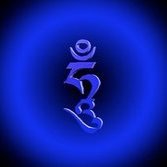
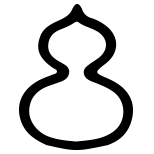
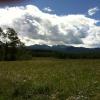
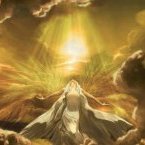







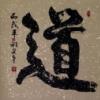




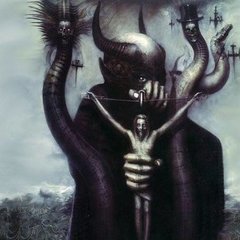
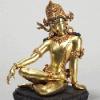
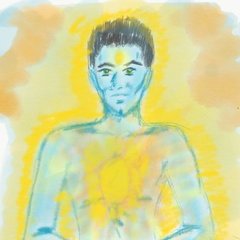
.thumb.jpg.c66c7d2e3e1f1cb4532159d8177cac70.jpg)



